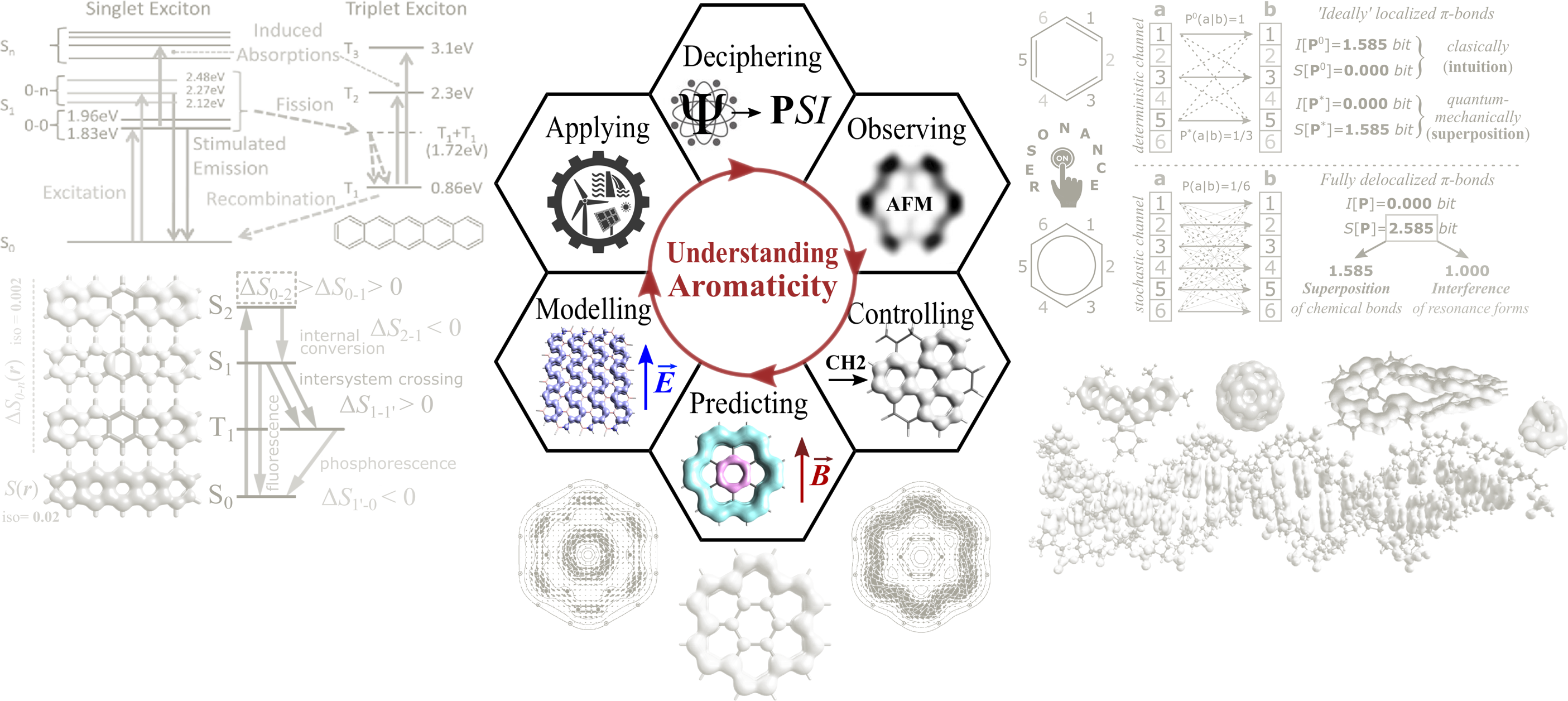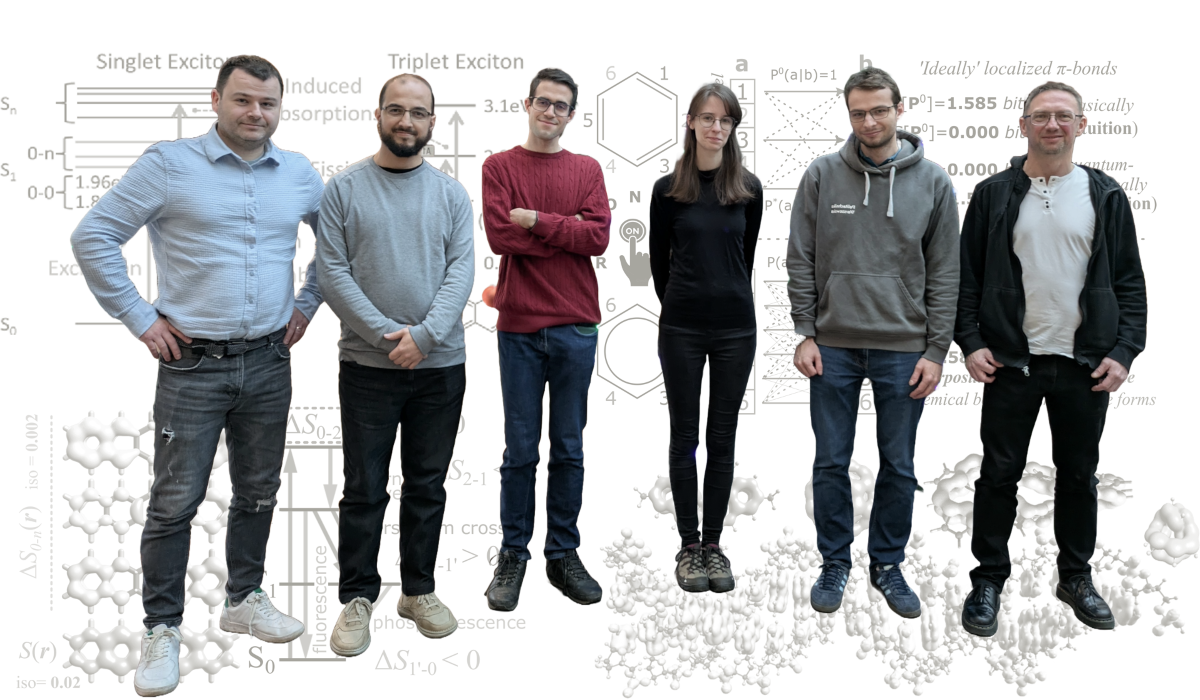The information-entropy origins of chemical aromaticity: theory and applications
National Science Centre, Poland, Sonata Bis 11: 2021/42/E/ST4/00332, 2072k PLN ( 2022 - 2028 )
Principal Investigator: Dariusz W. Szczepanik
The core objective of the project is to decipher information contained in the ground-state wavefunctions of selected topologically diversified aromatic molecules and underlying their unique physico-chemical properties, and to progress toward understanding of the first-principle rules that determine evolution of this information in the lowest-lying excited states, under the influ-ence of external magnetic field as well as along chemical reactions. Verification of the project hy-potheses requires cross-disciplinary approaches, using knowledge from mathematics, information theory, theoretical and computational chemistry, and materials science, which makes it a truly excit-ing multidisciplinary challenge. The project will deliver an original method that holds the promise to open new directions in the field of molecular aromaticity as well as tools and research-based knowledge that could support the design and synthesis of novel conjugated materials for artificial photosynthesis and photoinduced electron transfer, molecular photovoltaics, porphyrinoids with resonance-driven optical-mechanistic switches for nanoscience, nanotechnology and biomedicine, and many others. Validation of the proposed maximum resonance-entropy principle for conjugated systems would have potentially far-reaching implications for predictive computational chemistry as well as organic chemistry in general. A tangible result of the research project will be new software, a website dedicated exclusively to the project outcomes, and scientific open-access papers pub-lished in reputed journals from the ISI Master Journal List.
Research tasks:
1. From Ψ to
PSI : encoding the information and implementing the code.
2. Seeing is believing: aromaticity hidden in the
nc-AFM images.
3. Electrons move in mysterious (path)ways: delocalization vs magnetically-induced ring current.
4. Entropic Occam's razor: in search of the maximum information principle for electronic excitations in aromatic species.
5. Turn back toward the light: a resonance-entropy perspective on the (reverse) intersystem crossing in TADF materials.
6. Aromaticity at all costs: a rationale for singlet fission chromophore design.



